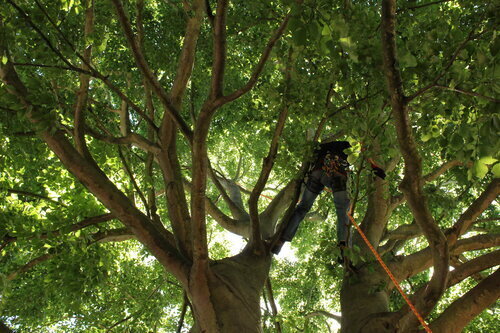City & Guilds NPTC Level 2 Award in Tree Climbing and Rescue June 23rd-27th 2025
City & Guilds NPTC Level 2 Award in Tree Climbing and Rescue June 23rd-27th 2025
Aerial Rescue for Tree Climbers
The introductory course to Aerial tree work. This course sets the seen for the aerial suite that will see you test your skills within the canopy.
Optional Assessment Fee: £130.00
Course Price inc. VAT: £700.00
Course Total Price inc. VAT: £830.00
This standard covers access of trees through climbing (both ladders and using climbing equipment) to carry out a variety of rescues. The aerial rescues include recovery of both conscious and unconscious casualties.
All of our courses are held in a laid back and constructive setting, welcoming all learners who strive to be their best.
More About Aerial Rescues
Tree climbing, like rock or ice climbing, is practiced aloft. Sometimes at significant height. As such, there is an inherent level of risk involved arborists must be prepared to accept. Even then situations sometimes arise that call for the rescue of a fellow tree surgeon. Therefore, everyone who heads into the canopy must be properly trained in all aspects of tree climbing and aerial rescue.
Situations Requiring Aerial Rescue
An aerial rescue is said to be necessary if a Facilitator needs to ascend to another climber in order to solve a problem they are having (perhaps with equipment) or bring the climber down. The following are some typical aerial rescue scenarios.
A climber is frozen from fear - Not everyone is suited to climbing trees. Some do not realise it until they are already well up a tree.
Equipment problems - A climber may be experiencing trouble with their rope and harness or other tree climbing equipment and need assistance.
Injury - In some cases, a cut branch may fall in an unexpected way and strike the climber. Other times a climber may lose a glove and suffer burns from the climbing rope.
Tangled hair - Long hair should always be secured with hair ties. Even then it may become tangled in the climber’s knot.
Something in the eye - If goggles come loose a climber may wind up with debris in their eye that compromises their ability to operate effectively.
The NPTC Tree Climbing & Aerial Rescue Course bestows an NPTC certificate of competence upon successful completion of the course. The practical skills learned during this NPTC level course will help the student in regards to future work positioning and career advancement.
Requirements for Aerial Rescue Work
Good physical condition - The Facilitator (rescuer) must be able to ascend quickly to reach the stranded climber. That requires that they maintain good physical conditioning.
First aid training - Injured climbers may require immediate intervention to stop bleeding. Most of the time, however, a quick check of vital signs is sufficient before lowering the person to the ground. As EMTs are not qualified to climb trees, the Facilitator must have basic first aid training.
Knowledge of double rope technique - Practical knowledge of this climbing technique is necessary in order to ensure a climber can both ascend and descend without help if they need to.
Upon successful completion of the NPTC Tree Climbing & Aerial Rescue Course, you will be well-positioned to proceed with more advanced NPTC assessment training to become a fully qualified aerial rescue Facilitator.
Where This Course Can Take You
When you are working as part of a tree felling team, having a colleague trained in aerial rescue is absolutely vital. As we've already established, there is a wide range of reasons why you may have to help get someone down who is stranded at height. Be it injury, fear or equipment problems – it can happen at any time and to any individual.
As a colleague, this course can give you the potentially life-saving skills to step up in such a scenario and help someone in their hour of need. You will also, of course, become a more valuable employee and qualifications like this can give you a broader range of future career options.
This broader range of career options is a huge positive for lots of different reasons – one of them, of course, being your income. Practical tree surgeons and contractors can expect to earn between £15,000 and £22,000 a year.
However, when you start to take on specialist skills and qualifications – such as aerial rescue – you can start to move towards a specialist role and, as such, your earning potential increases. Indeed, specialist climbers can expect salaries of up to £30,000 in the current job market.
About Our DTE Academy
The Down To Earth Trees Academy is run by fully qualified and experienced tree surgeons – all of whom have experience in the industry and all of whom are passionate about our work. We have trained hundreds of arborists over the years and plan to carry on doing so.
Our mission is always to provide you with the best possible learning environment. So, as well as delivering the ‘hard skills’ that are required to pass the course (something that we will work hard to help you achieve), we also take the time to work with you on the ‘soft skills’ that can enhance your work performance and career development.
Contact Us
Has this course piqued your interest? Great. Well, we are proud to be an experienced supplier of City & Guilds qualifications. Our courses are run by professional tutors who have hands-on experience in the tree climbing and rescue industry. Call us on 01959 524623 or email us at enquiries@dtetrees.co.uk to book your place.
FAQs
What's the first step in affecting a rescue?
The first step is to cease all other work and perform a careful assessment of the situation. If possible you should learn what type of injury the person has experienced so that you know whether they'll be able to descend under their own power or if they'll need significant help. You may also need to determine if the rescue can be carried out from the same tree or if a nearby tree will need to be used.
Why is first aid training necessary?
Aerial rescue often entails more than climbing up to a stuck colleague and helping to free them from whatever they may be ensnared in. Tree surgeons sometimes experience injuries when they are working up a tree. In which case it is usually necessary for whoever reaches the injured arborist first to administer first aid before they can help the injured colleague descend.
Will I receive hands-on training with ladders?
In some cases ladders are the best choice for conducting the rescue of a stranded or injured tree surgeon. So yes, you will receive instruction in the proper use of ladders when it comes to performing a rescue. The training will include not only the proper use of a ladder in such a case, but how to assess whether a ladder is the proper instrument to carry out the rescue.
Is every tree surgeon trained in aerial rescue?
No, not every tree surgeon is trained in aerial rescue. Some choose not to receive this training and that's fine. But those who do choose to undergo this type of training are often able to command a higher salary because of their special skills.
How long does a typical tree climbing and aerial rescue take?
It depends entirely on the reason why they are stranded and the degree of difficulty in reaching them. If they simply experienced an equipment problem they may be down safely in an hour or less. If they are badly injured, unconscious and in a place where they are not easy to reach it may take several hours.

